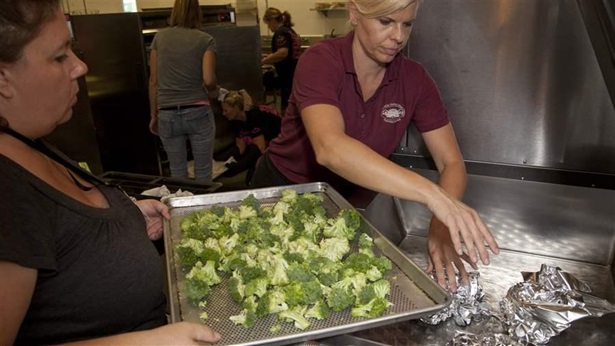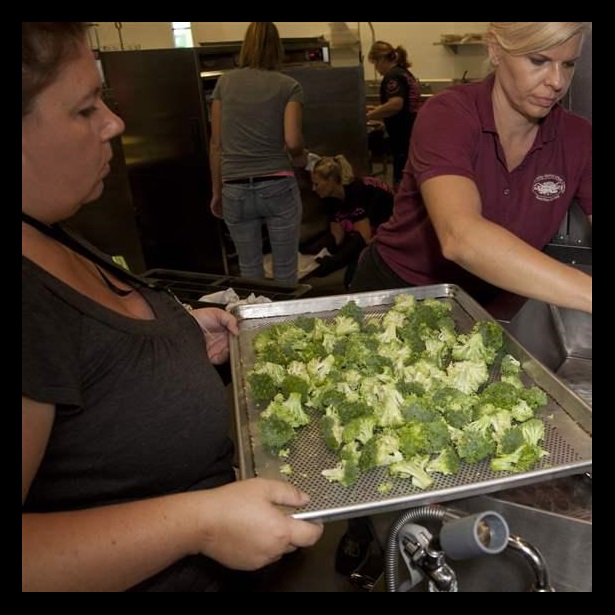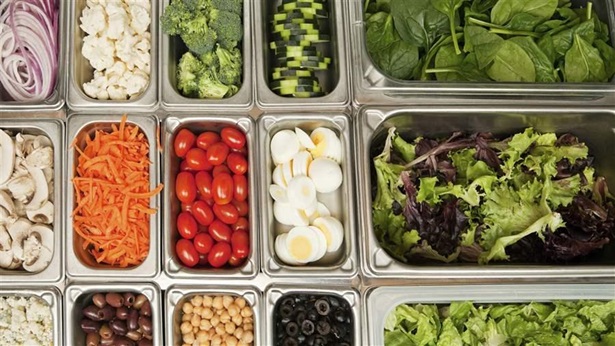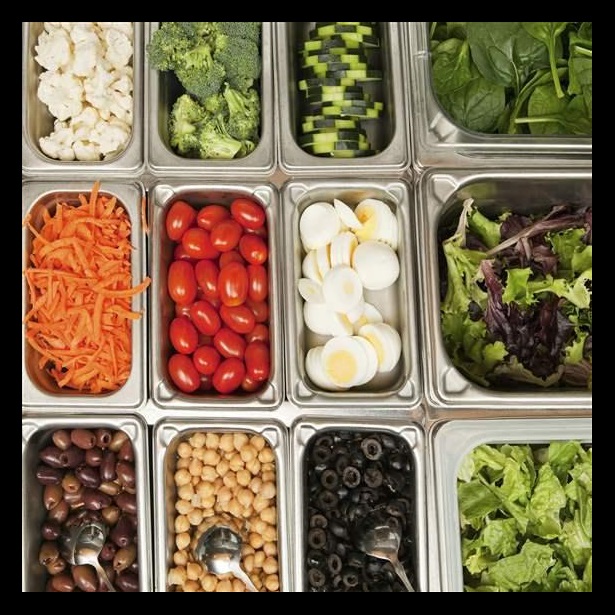Westlake Middle School
Oakland, California
California’s Oakland Unified School District (OUSD) is recognized as a national leader for transforming its lunch program to provide healthier, locally sourced food to students. Through the district’s efforts, student demand for fresh fruits and vegetables increased enough that Westlake Middle School decided to use a U.S. Department of Agriculture kitchen equipment grant to buy a new walk-in refrigerator for all the produce.
The school district pioneered such strategies as California Thursdays—a program that exposes children to locally sourced foods—to give Westlake’s almost 600 sixth-, seventh-, and eighth-graders the chance to participate in recipe development and taste testing.1 Working with the Center for Ecoliteracy, the OUSD team developed a training program for handling raw chicken, which district schools had not cooked for over 20 years, and now participates in locally sourced, sustainable chicken procurement. These events and programs have helped staff build culinary skills and generate excitement among students and the broader school community around healthy eating.
Before receiving its USDA grant, Westlake had several older reach-in refrigerators and milk coolers that used to line the kitchen, taking up valuable floor space. With the new walk-in refrigerator, the school is able to more efficiently hold and store the fresh fruits, vegetables, chicken, and other foods served daily.
“Under the previous arrangement, produce was stored where it fit in a variety of refrigeration units around the kitchen,” said Velvet Tate, site manager at Westlake. “Now, it can be efficiently stored and organized in one location so employees know exactly where to find what they need.”

Teaching students healthy eating habits by serving fresh, nutritious meals is part of the school district’s meal program identity, so having enough storage space for these items was essential to its success. In addition to increased storage, the new refrigerator has financial benefits because it allows for more bulk purchasing and is energy-efficient.
Robert Law, the district’s nutrition services assistant director, said that the old refrigeration units required frequent repair and that thanks to the grant, the school no longer has to choose between putting funds toward food or equipment maintenance.
Oakland’s nutrition services director, Jennifer LeBarre, said: “The USDA equipment funding grant allows us the storage for fruit, vegetables, and other raw ingredients. Having those items on hand in bulk has given us the ability to cook menu items from scratch, which results in more nutritious, delicious meals for students.”
Endnote
1 California Thursdays is a collaboration between the Center for Ecoliteracy and 58 public school districts, including OUSD. The program provides students with healthy, fresh meals prepared with California-grown foods and is growing in popularity, expanding to a rapidly increasing number of districts across the state. Center for Ecoliteracy, “What Is California Thursdays?” accessed July 28, 2016, http://www.californiathursdays.org


America’s Overdose Crisis
Sign up for our five-email course explaining the overdose crisis in America, the state of treatment access, and ways to improve care
Sign up

USDA’s School Kitchen Grants Benefit Meal Programs and Students
The right equipment makes a difference in efficient...
Learn More

School Nutrition Gets a Boost From USDA Kitchen Equipment Grants
School Nutrition Gets a Boost From USDA Kitchen Equipment Grants
Learn More








